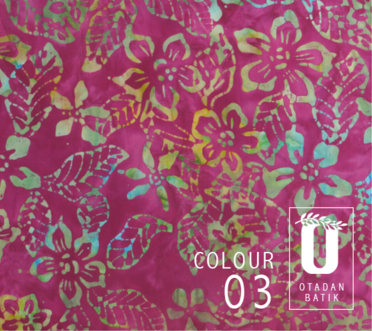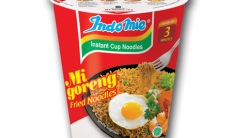By Chen Yu
China Economic Net, China
Although Fujian has a long history of textile and apparel production and processing, the development of a textile and apparel industry in a modern sense is synchronic with the China’s reform and opening-up policies.
From counterfeiting to OEM production, processing in accordance with orders, and the establishment of an independent brand, the textile and apparel industry in Fujian has experienced a difficult development course. There has appeared a trend of steady, healthy, and rapid development in the textile and apparel industry in Fujian, which has experienced restructuring and industrial upgrading in recent 10years. The ranking of Fujian Province in terms of the economic aggregate and main economic indexes for the textile and apparel industry in the whole province has sprung for No. 22 when the policies of reform and opening-up was initially implemented to No. 5 now. In 2014, all textile and apparel enterprises above the designated scale in Fujian as a province realized a total industrial production value of RMB165.115 billion yuan, accounting for 13.2 percent of the total industrial production value for the province as a whole.
As the textile and apparel industry in Fujian has developed rapidly and the industrial chain has stretched out, there have shaped up such industrial systems as chemical fiber, textile, manufacture, printing and dyeing, non-woven cloth, textiles for industrial purposes, household textiles, garments, textile machineries; and various kinds of industrial forms for textile and apparel came forth. The effects of brands and clusters have gradually emerged.
When the policies of reform and opening-up was initially implemented, most textile and apparel enterprises in Fujian, especially those private enterprises, simply rested in a phase of extensive development at low costs, when priority was given to the input of labors. As they lacked self-owned core technologies and original intellectual property rights and were less competitive, such enterprises could only strive for survival at the low end of the global industrial chain on OEM production and processing in accordance with orders. As competitions in the international market prick up, the textile and apparel industry in Fujian actively steps onto the road of innovation and upgrading, establishes innovative mechanisms, introduces the internationally latest technologies and equipments as well as production and processing technologies, accelerates the cultivation of persons with ability, makes greater efforts in the development and research of textile fibers and textile fabrics. As a result, textiles and apparel from Fujian has been improved in terms of quality; gradually, products develop towards the direction of many varieties and falling into series and the regional features have become increasingly evident. A batch of textile industry accumulation places with regional features and colonies of apparel enterprises have grown up rapidly. All over the provinces, regions as an experiment unit for textile and apparel industrial cluster with a title granted from the China National Textile And Apparel Council include two cities as a base, one well-know city with features and 11 well-known towns with features. Jinfeng Town and Songxia Town in the jurisdiction of Changle City, Fujian Province have been respectively granted with the title of “a famous town specializing in textile in China” and the title of “a famous town specializing in laces in China”. Such towns as Hanjiang, Lingxiu, and Baogai in Shishi City, Shenhu, Yinglin, and Longhu in Jinjiang City have been named as respective towns featured with trousers, sportswear, underclothes, leisure wear, and weaving as well as supplementary materials. There are over 1,000 enterprises manufacturing jackets in Jinjiang City as well, the output of jacket products with a self-owned brand of those enterprises accounts for over 40 percent of the total sales volume in the market in urban areas in China. And also, such products have been sold all over the world, making Jinjiang the Jacket Capital in the world worthy of the name.
In recent years, all textile and apparel enterprises in Fujian Province have been committing to launching the plan of brand cultivation. Brand establishment started in the coastal areas in the east of the province, and there have gradually shaped up brand clusters with regional and industrial features. There have emerged well-known brands enjoying their high reputation as well-know brands at home and abroad, such as SEVEN NINETEEN SEVEN, k-boxing, SEPTWOLVES, Fordoo, edenbo, Tries, Ports, MINZE-STYLE. Over 50 kinds of products have won the title as “Fujian Province famous brand products”, and 15 kinds of products were state-designated products exempt from quality (surveillance) inspection. In addition, a batch of enterprises have won such titles as “China Well-known Mark” and “Fujian famous brand” while various textile and apparel enterprises have won unusual glories in national assessments on enterprises in terms of competitiveness. As shown by 2014 Statistics on Large-scale Chinese retailing enterprises in terms of Their Distribution of Major Commodities in the Market jointly promulgated by China General Chamber of Commerce and the Nation Commercial Information Center of China (CNCIC), a batch of domestic self-owned brands including k-boxing, SEPTWOLVES, SEVEN NINETEEN SEVEN, and Joeone have become the main force in the market for men’s wear in China for the moment. Thus, it is illustrated that self-owned textile and apparel brands in Fujian have become the first choice for consumers through accumulation and careful management during many years and their comprehensive market shares have further increased. Therefore, preliminary effects of brand strategies have been seen.
As shown in the Report on the Development of Textile Industrial Clusters in China issued by the China National Textile And Apparel Council (CNTAC), various textile and apparel industrial clusters having come into being during the rapid development of China’s textile industry have become the important foundation for the textile industry and the textile economic gross of the 133 local industrial clusters has accounted for 40 percent of the national textile economic gross. In Fujian, textile and apparel industrial clusters are attracting attention. Through cultivation and development for years, there have formed several key regions for clusters with a high level of industrial concentration and distinct scale benefits while having made conspicuous dedications to the development of the industry and the regional economy all over the province. Examples of such regions include Changle City, Fengze District of Quanzhou City, Shishi City, Jinjiang City, Putian City, as well as Changting County and Yong’an City in the jurisdiction of Sanming City as upcoming regions. In Changle City, there are over 770 textile and apparel enterprises falling into various categories and 130,000 workers engaged in the industry at present; and in 2014, the industrial production value of enterprises above the designated scale amounted to RMB32 billion yuan. In Jinjiang City, there are 3240 textile and apparel enterprises and 250,000 workers engaged in the industry at present; and in 2014, the total production value realized by the textile and apparel enterprises amounted to RMB49.5 billion yuan. In Shishi City as one of the earliest cradles and distributing centers in the textile and apparel industry in China, which once won the title of “China’s Famous City of Leisure Suits” granted by the CNTAC, there are over 4,000 registered trademark for apparel and in 2014, the industrial production value of the local textile and apparel industry amounted to RMB25.6 billion yuan, accounting for 56 percent of the city’s total industrial production value.
Most textile and apparel industrial clusters in Fujian give priority to the regional economy of local countries and towns. They tend to have a high level of industrial concentration, relatively consummate matching utilities, fairly low production costs, distinct interactions between the industry and the market. Thus, the driving and interaction effects of such clusters are fairly obvious. For the moment, the textile and apparel industry in Fujian has already stepped into a new pattern of all-around development featured with prominent industrial clusters, complete industrial chains, enlarging enterprise scale, brilliant industrial characteristics, a great number of well-known brands, and enhanced competitiveness for the industry as a whole.





